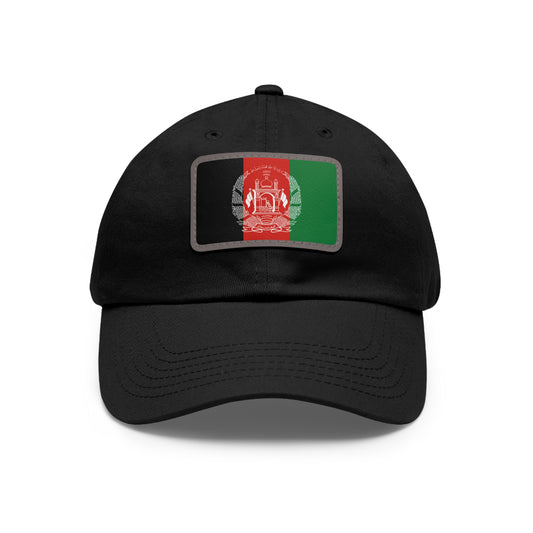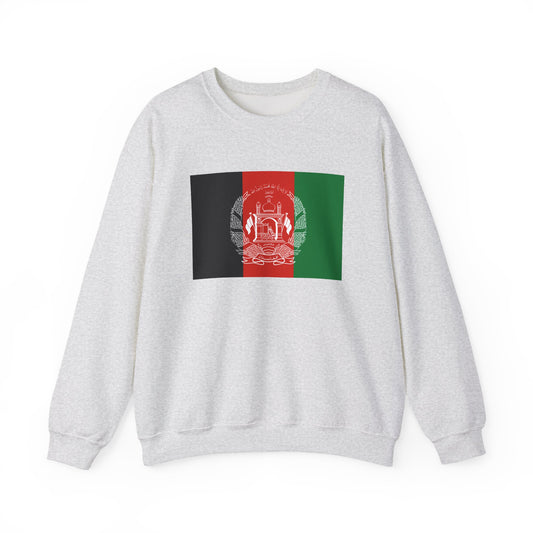-
Afghanistan Pillow
Regular price $22.65 USDRegular priceUnit price / per -
Afghanistan Backpack
Regular price $59.79 USDRegular priceUnit price / per -
Afghanistan Leather Patch Hat
Regular price $18.85 USDRegular priceUnit price / per -
Afghanistan Sweatshirt
Regular price $34.15 USDRegular priceUnit price / per -
Afghanistan Flag Sweatshirt
Regular price $34.15 USDRegular priceUnit price / per -
Afghanistan Mug
Regular price $11.65 USDRegular priceUnit price / per -
Afghanistan Trucker Cap
Regular price $14.90 USDRegular priceUnit price / per -
Afghanistan Flag Hoodies
Regular price $34.40 USDRegular priceUnit price / per -
Afghanistan T-shirts
Regular price $22.79 USDRegular priceUnit price / per -
Afghanistan Flag on Hoodie
Regular price $34.40 USDRegular priceUnit price / per -
Afghanistan Flag on T-shirt
Regular price $22.79 USDRegular priceUnit price / per
Collection: Afghanistan
The Afghanistan flag, with its vibrant tricolor design, holds a rich history and symbolism that reflects the nation's cultural heritage and struggles. We will delve into the details of the Afghanistan flag, exploring its design, historical context, symbolism, current relevance, and some lesser-known facts about this iconic national symbol.
Overview of the Afghanistan Flag

The national flag of Afghanistan presents a striking tricolor arrangement, composed of vertical stripes in black, red, and green. At the heart of the flag sits the national emblem, which depicts a mosque encircled by two flags, underneath which lies a sacred Quran. This central image is intricately detailed, showcasing minarets that reach toward the sky, symbolizing the Islamic faith that is deeply ingrained in the Afghan culture.
The tricolor palette is not just for aesthetic appeal; each hue narrates a part of Afghanistan's tumultuous yet resilient history. The flag’s design is more than mere decoration; it is a vibrant tapestry weaving together the past, present, and hopeful future of the Afghan nation. This emblematic design, while simple in its composition, is laden with profound meaning, making it a powerful national symbol recognized not only within Afghanistan but also across the globe.
Historical Context

The journey of the Afghanistan flag through history is a testament to the nation's evolving identity and sovereignty. Initially adopted in 1928 under King Amanullah Khan's leadership, the flag's design aimed to modernize the country's image and signal a new era of independence following centuries of conflict and foreign domination. Over the years, the flag has witnessed numerous revisions, reflecting the changing political and social landscape of Afghanistan. Each iteration of the flag, while varying in design, has consistently incorporated symbols of national significance, such as the mosque and the colors representing Afghanistan's past, present, and aspirations.
The evolution of the flag underscores pivotal moments in Afghan history, from attempts at modernization and the struggle against Soviet intervention to the ongoing quest for peace and stability. Changes to the flag often coincided with shifts in governance, from monarchies to republics, and periods of Taliban control, each government leaving its mark on the national emblem. Despite these changes, the essence of the Afghan spirit—resilience, sovereignty, and unity—remains embedded within the flag, making it a perennial emblem of the nation's endurance and hope. Throughout its history, the Afghanistan flag has stood as a beacon for its people, a symbol of their indomitable will and their continuous journey toward a harmonious and prosperous future.
Symbolism Behind the Design
The tricolor palette of the Afghanistan flag weaves a rich tapestry of meanings, each hue narrating a unique aspect of the nation's saga. The black stripe harks back to the tumultuous periods of Afghanistan's history, reminding the nation and the world of the times when the country was under foreign domination or faced internal strife. Moving to the vibrant red, this color stands as a solemn tribute to the valor and sacrifice of the countless individuals who laid down their lives for Afghanistan's independence and sovereignty. It symbolizes the bloodshed in the pursuit of freedom, a poignant reminder of the price paid for the nation's autonomy. The green stripe ushers in a message of hope and renewal, representing the fertile future awaiting Afghanistan, a nod to the nation’s aspirations for peace, prosperity, and growth.
Central to the flag's design is the national emblem, which further enriches the flag's narrative of unity and faith. Featuring a mosque with its mihrab pointing towards Mecca, it underscores Afghanistan's Islamic identity and the importance of religion in the fabric of its society. The inclusion of the Quran signifies the spiritual guidance that has been a cornerstone for the nation, while the flags flanking the mosque symbolize Afghanistan's sovereignty and the unity of its people, reinforcing the flag’s overarching themes of resilience, faith, and hope for a brighter future.
Current Relevance of the Flag
In today's Afghanistan, the national flag serves as a powerful emblem during public gatherings, significant state functions, and in the hearts of its people as they navigate through the complexities of current times. It stands as a beacon of hope amidst ongoing political transitions and societal changes, symbolizing the resilience and unity required to forge a path toward stability and prosperity.
As it flutters high above government buildings, schools, and international conferences, it carries the aspirations of a nation striving for peace and unity. Yet, the flag's presence in such scenarios also opens up dialogue around its representation, challenging citizens and leaders alike to reflect on the ideals it embodies versus the realities on the ground. It is not uncommon for the flag to be at the center of discussions on national identity, with varying perspectives on what the future of Afghanistan should look like. This dynamic interplay between symbol and society underscores the flag's current relevance, marking it as an enduring symbol of national pride and a focal point for conversation on Afghanistan's ongoing journey toward enduring peace and self-determination.
Additional Facts and Anecdotes
While the Afghanistan flag symbolizes deep historical and cultural values, certain protocols around its display emphasize the country's respect for national symbols. Notably, the flag must always be raised with honor and lowered with care, ensuring it never makes contact with the ground, reflecting a universal practice of treating national emblems with respect. Unique to Afghanistan, the flag features prominently in both celebration and solemnity, encapsulating the nation's pride and collective memory.
A fascinating anecdote is the number of flag changes Afghanistan has undergone, more than any other country in the last century, each change mirroring a significant turn in the nation’s history. This fluid identity showcases the nation's resilience and adaptability in the face of adversity. Additionally, the flag is integral to Afghanistan's Independence Day celebrations, where it is displayed with great pride across the country, further solidifying its role as a central emblem of national unity and hope.






















